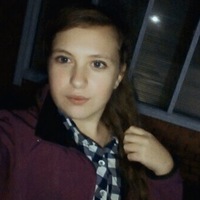
29.11.2021 Занятие N 13н Математический кружок, 179 школа, 5 – 7 класс. Начинающие «Тест»-задачи
Задача 13н.1. На рисунке справа в 1-й фигуре — 5 прямоугольников, во 2-й — 9, в 3-й – 13. Если составлять фигуры дальше, сколько прямоугольников будет в 10-й фигуре? Задача 13н. 2. На окружности даны 100 точек. Кузнечик прыгает по точкам по часовой стрелке, пока не вернётся в исходную точку. Сколько всего разных точек он посетит, если он прыгает не подряд, а а) через одну точку; б) через 3 точки; в) через 2 точки? Задача 13.3. Квадрат разрезали пополам и сложили из двух получившихся прямоугольников букву т (без наложений). Найдите сторону квадрата, если периметр получившейся фигуры равен 120 см. Задача 13.4. В театре продали все билеты в первый ряд, но по ошибке на одно из мест продали два билста. Сумма номеров мест на всех этих билетах равна 179. На какое место продали два билета? Задача 13.5. Петя возводил в квадрат числа 1, 2, 3, ... Квадрат какого числа впервые превысил 1000? «Письменные задачи Задача 13.6. На некоторые клетки квадратной доски 4х4 выкладывают стопкой золотые монеты, а на остальные клетки - серебряные. Можно ли положить монеты так, чтобы в каждом квадрате 3 х 3 серебряных монет было больше, чем золотых, а на всей доске золотых было больше, чем серебряных? Задача 13н.7. Имеется много четырехклеточных фигурок в виде буквы «T с короткой пожкой, как на рисунке ниже. Как сложить из таких фигурок (без дырок и перекрытий) а) квадрат; б) букву «Т» той же формы, но большего размера? (Объясните, как это сделать или просто нарисуйте. ) 0
0
 0
0
Ответы на вопрос
 Внимание! Ответы на вопросы дают живые люди. Они могут содержать ошибочную информацию, заблуждения, а также ответы могут быть сгенерированы нейросетями. Будьте внимательны. Если вы уверены, что ответ неверный, нажмите кнопку "Пожаловаться" под ответом.
Внимание! Ответы на вопросы дают живые люди. Они могут содержать ошибочную информацию, заблуждения, а также ответы могут быть сгенерированы нейросетями. Будьте внимательны. Если вы уверены, что ответ неверный, нажмите кнопку "Пожаловаться" под ответом.

Ответ:
В) через 2 точки.........
 0
0
 0
0

Problem 13n.1: Number of Rectangles in Successive Figures
In the given problem, the number of rectangles in each figure is increasing by 4. In the first figure, there are 5 rectangles, in the second figure there are 9 rectangles, and in the third figure, there are 13 rectangles. To find the number of rectangles in the 10th figure, we can use the formula:Number of rectangles = 5 + (n - 1) * 4
where n is the number of the figure. Plugging in n = 10, we can calculate the number of rectangles in the 10th figure:
Number of rectangles = 5 + (10 - 1) * 4 = 5 + 9 * 4 = 5 + 36 = 41 rectangles.
Therefore, there will be 41 rectangles in the 10th figure.
Problem 13n.2: Number of Different Points Visited by a Grasshopper
In this problem, a grasshopper jumps on 100 points on a circle in a clockwise direction until it returns to the starting point. We need to find the number of different points the grasshopper will visit if it jumps: a) through every other point, b) through every third point, c) through every second point.a) If the grasshopper jumps through every other point, it will visit 50 different points. This is because there are 100 points on the circle, and the grasshopper will visit every other point, starting from the first point.
b) If the grasshopper jumps through every third point, it will visit 33 different points. This is because there are 100 points on the circle, and the grasshopper will visit every third point, starting from the first point.
c) If the grasshopper jumps through every second point, it will visit 50 different points. This is because there are 100 points on the circle, and the grasshopper will visit every second point, starting from the first point.
Therefore, the grasshopper will visit: a) 50 different points if it jumps through every other point, b) 33 different points if it jumps through every third point, c) 50 different points if it jumps through every second point.
Problem 13.3: Side Length of a Square
In this problem, a square is cut in half and the two resulting rectangles are rearranged to form the letter "t" without any overlap. We need to find the side length of the square if the perimeter of the resulting figure is 120 cm.Let's assume the side length of the square is x cm. The perimeter of the square is 4x cm. After cutting the square in half, we have two rectangles with dimensions x cm by x/2 cm. When these rectangles are rearranged to form the letter "t," the resulting figure has a perimeter of 120 cm.
The perimeter of the resulting figure is equal to the sum of the perimeters of the two rectangles. The perimeter of each rectangle is given by the formula: 2 * (length + width). Therefore, we can write the equation:
2 * (x + x/2) + 2 * (x/2) = 120
Simplifying the equation, we get:
2x + x + x = 120 4x = 120 x = 30
Therefore, the side length of the square is 30 cm.
Problem 13.4: Seat Numbers in a Theater
In this problem, all the tickets in the first row of a theater were sold, but due to a mistake, two tickets were sold for the same seat. The sum of the seat numbers on all these tickets is 179. We need to find the number of the seat for which two tickets were sold.Let's assume the number of the seat for which two tickets were sold is x. The sum of the seat numbers on all the tickets is 179. Since two tickets were sold for the same seat, we can write the equation:
x + x = 179
Simplifying the equation, we get:
2x = 179 x = 179/2 x = 89.5
Since seat numbers are usually whole numbers, it is not possible to have a seat number of 89.5. Therefore, there seems to be an error in the problem statement.
Problem 13.5: Square of Numbers
In this problem, Petya squares the numbers 1, 2, 3, and so on until the square of a number exceeds 1000. We need to find the square of the smallest number that exceeds 1000.Let's calculate the squares of the numbers until we find the first square that exceeds 1000:
1^2 = 1 2^2 = 4 3^2 = 9 4^2 = 16 5^2 = 25 6^2 = 36 7^2 = 49 8^2 = 64 9^2 = 81 10^2 = 100 11^2 = 121 12^2 = 144 13^2 = 169 14^2 = 196 15^2 = 225 16^2 = 256 17^2 = 289 18^2 = 324 19^2 = 361 20^2 = 400 21^2 = 441 22^2 = 484 23^2 = 529 24^2 = 576 25^2 = 625 26^2 = 676 27^2 = 729 28^2 = 784 29^2 = 841 30^2 = 900 31^2 = 961 32^2 = 1024
The square of the smallest number that exceeds 1000 is 1024.
Problem 13.6: Arranging Coins on a Chessboard
In this problem, we need to determine if it is possible to arrange gold coins and silver coins on a 4x4 chessboard in such a way that each 3x3 square on the board has more silver coins than gold coins, and there are more gold coins than silver coins on the entire board.To solve this problem, let's consider the possible arrangements of coins on the chessboard. We can start by placing gold coins in the center of each 3x3 square and silver coins in the remaining cells. This arrangement satisfies the condition that each 3x3 square has more silver coins than gold coins. However, in this arrangement, there are more silver coins than gold coins on the entire board.
Therefore, it is not possible to arrange the coins on the chessboard in such a way that each 3x3 square has more silver coins than gold coins, and there are more gold coins than silver coins on the entire board.
Problem 13n.7: Forming Shapes with "T" Pieces
In this problem, we have "T" shaped pieces with a short stem, and we need to determine how to form a square and a larger "T" shape using these pieces.a) To form a square using the "T" shaped pieces, we can arrange them in a 2x2 grid, with the short stems of the pieces facing towards the center. Here is an example of how the pieces can be arranged to form a square:
``` TT TT ```
b) To form a larger "T" shape using the "T" shaped pieces, we can arrange them in a 3x3 grid, with the short stems of the pieces facing towards the center. Here is an example of how the pieces can be arranged to form a larger "T" shape:
``` TTT T T ```
In both cases, it is important to ensure that the pieces are arranged without any holes or overlaps.
I hope this helps! Let me know if you have any further questions.
 0
0
 0
0
Похожие вопросы
Топ вопросов за вчера в категории Математика
Последние заданные вопросы в категории Математика
-
Математика
-
Литература
-
Алгебра
-
Русский язык
-
Геометрия
-
Английский язык
-
Химия
-
Физика
-
Биология
-
Другие предметы
-
История
-
Обществознание
-
Окружающий мир
-
География
-
Українська мова
-
Информатика
-
Українська література
-
Қазақ тiлi
-
Экономика
-
Музыка
-
Право
-
Беларуская мова
-
Французский язык
-
Немецкий язык
-
МХК
-
ОБЖ
-
Психология
-
Физкультура и спорт
-
Астрономия
-
Кыргыз тили
-
Оʻzbek tili




























